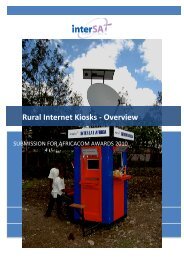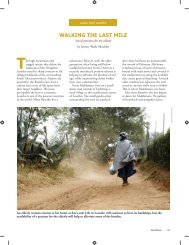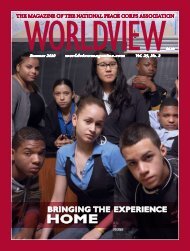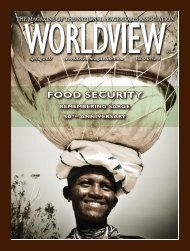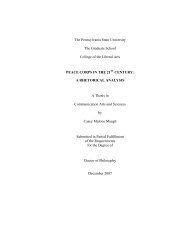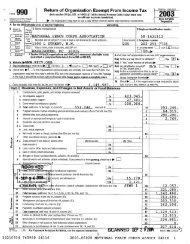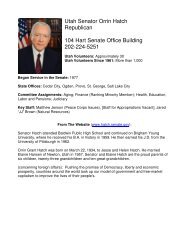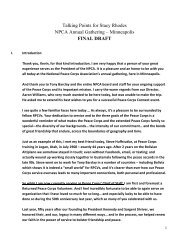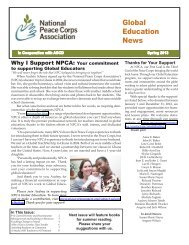Group Education Manual - Peace Corps Wiki
Group Education Manual - Peace Corps Wiki
Group Education Manual - Peace Corps Wiki
Create successful ePaper yourself
Turn your PDF publications into a flip-book with our unique Google optimized e-Paper software.
Handout 6B: Taking Risks/Facing RisksGender norms/roles and inequalities in power have a huge impact on the HIV risks women and men take.However, other factors are important too, such as age, wealth/poverty, and location (village/town). Keypoints: Women face more risks for HIV than men because of their anatomies. Semen remains in the vagina for along time after penetrative sex. This increases women’s chances of infection from any single sexual act.There are also more viruses in men’s semen than in women’s vaginal fluid. The inside of the vagina isthin. This means it is more vulnerable than skin to cuts or tears that can easily allow HIV into the body.The penis is less vulnerable because it is protected by skin. Very young women are even more vulnerable. This is because the lining of their vagina has not fullydeveloped. With an STI, women are at least four times more vulnerable to infection. Women often donot know they have STIs, as they often show no signs of infection. Women face more risks for HIV than men because they lack power and control in their sexual lives.Women are not expected to discuss or make decisions about sexuality. The imbalance of power betweenmen and women means that women cannot ask for, or insist on, using a condom or other forms ofprotection. Poor women may rely on a male partner for their livelihood. This makes them unable to asktheir partners or husbands to use condoms. It also makes it difficult to refuse sex even when they knowthat they risk becoming pregnant or infected with a STI/HIV. Many women have to trade sex for money or other kinds of support. This includes women who work assex workers. But it also includes women and girls who exchange sex for payment of school fees, rent,food, or other forms of status and protection. Violence against women increases women’s risk for HIV. Men’s rape of women occurs worldwide. Thiscrime is linked to men’s power over women. Forced sex increases the risk for HIV transmission becauseof the bruising and cuts it may produce. Other kinds of physical and emotional violence increasewomen’s risk. Many women will not ask their male partners to use condoms for fear of men’s violentreaction. Women who must tell their partners about STIs/HIV may experience physical, mental, oremotional abuse, and even divorce. Men take more risks with HIV because of how they have been raised. Men are encouraged to beginhaving sex early to prove themselves as men. A sign of manhood and success is to have as many femalepartners as possible. For married and unmarried men, multiple partners are culturally accepted. Men aresometimes ridiculed if they do not show that they will take advantage of all sexual opportunities. Competition is another feature of living as a man. This applies to the sexuality. Men compete withoneanother over who is seen as the bigger and better man. One symbol of manhood is to be sexually daring.This can mean not protecting oneself with a condom, as this would signal vulnerability and weakness.Many men believe condoms lead to a lack of pleasure or are a sign of unfaithfulness. Using condoms alsogoes against one of the most important symbols of manhood, which is having as many children aspossible. Men are seeking younger partners in order to avoid infection. This is based on the belief that sex with avirgin cures AIDS and other infections. On the other hand, women are expected to have sexual relationswith, or marry, older men, who are more likely to be infected.54




